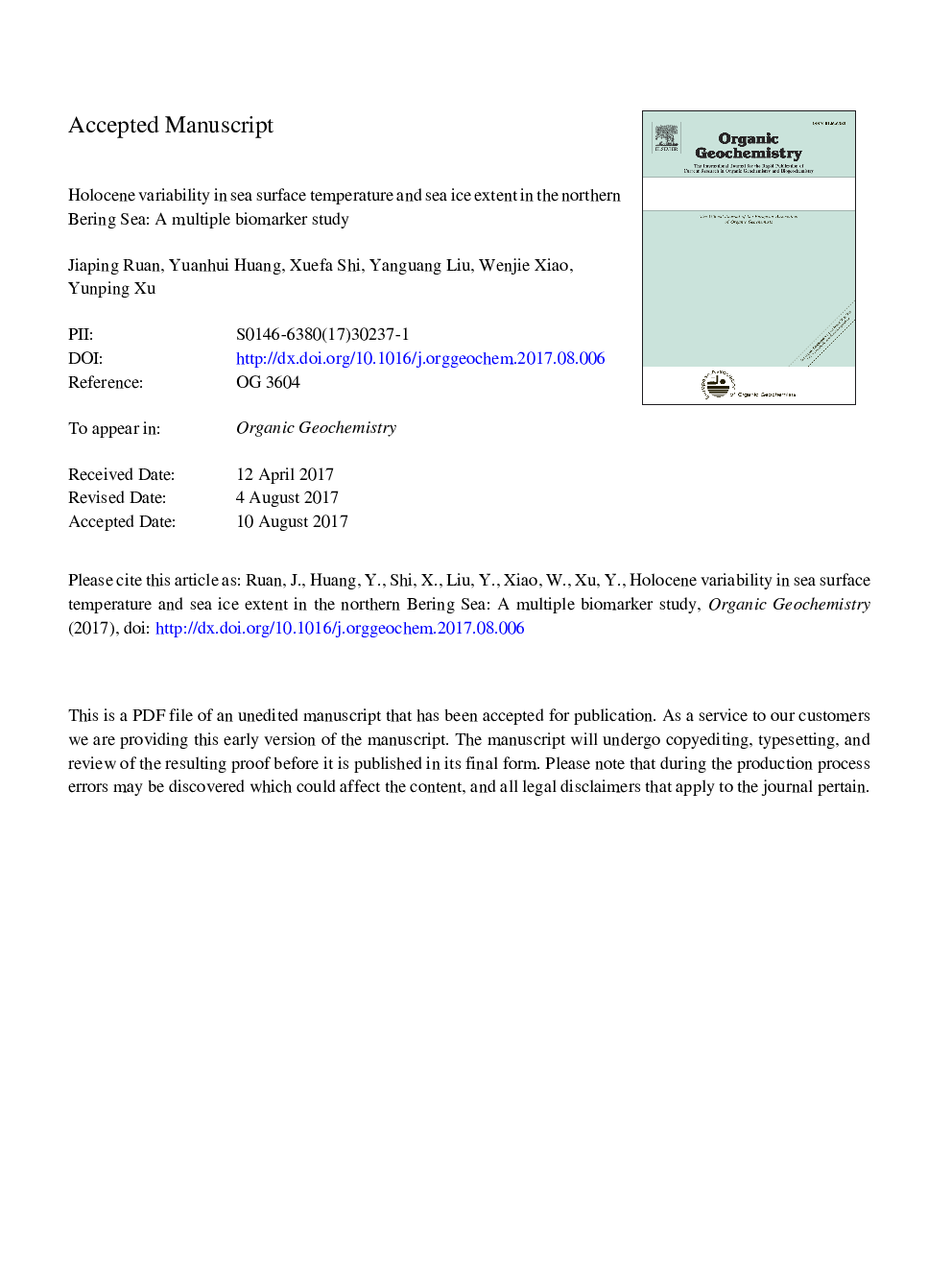| Article ID | Journal | Published Year | Pages | File Type |
|---|---|---|---|---|
| 5161327 | Organic Geochemistry | 2017 | 39 Pages |
Abstract
The Bering Sea, as a transition between the Arctic and the Pacific oceans, plays an important role in global climate change and biogeochemical cycles. Here we examined a variety of biomarkers in a core (BR07) from the northern continental slope of the Bering Sea in order to reconstruct summer sea surface temperature (SST) and sea ice extent during the period 11-2 ka (thousands of calendar years ago). The TEX86L -derived SST gradually decreased (ca. 1.6 °C) from early to mid-Holocene (11.3-8.0 ka), but did not show a cooling or warming trend afterwards. Our SST data do not support the hypothesis of a Holocene seesaw in temperature between the North Atlantic and the North Pacific. Several algal biomarkers, including IP25 and its derived indicators for sea ice, brassicasterol for diatoms and dinosterol for dinoflagellates, suggest that the sea ice extent gradually increased from early to late Holocene, interrupted by rapid changes at ca. 2.8-2.6 and 5.5-5.0 ka. The synchronous evolution between IP25 and SST indicates a strong coupling between sea ice cover and climate change in the Holocene.
Related Topics
Physical Sciences and Engineering
Chemistry
Organic Chemistry
Authors
Jiaping Ruan, Yuanhui Huang, Xuefa Shi, Yanguang Liu, Wenjie Xiao, Yunping Xu,
